Make Funny, Make Money
In media, does satire generate profits? Or do profits permit satire? Causation is elusive. But there is a correlation between how much money a media organization generates and how much funny it publishes or puts on air.
When print newspapers were dominant and highly profitable, satire was a significant part of their content. Based at The Washington Post through the 1960s, '70s and '80s, Art Buchwald's syndicated column appeared in more than 500 newspapers worldwide. His droll takes on Beltway politics and everyday absurdities reached millions of Americans and were extremely influential. Mike Royko of the Chicago Daily News and Sun-Times blended populist snark about institutional corruption and sarcastic ethnic humor in hundreds of newspapers, inspiring a generation of journalists. Other influential widely syndicated columnists included those who blended gossip, news and jokes like Herb "Baghdad by the Bay" Caen of the San Francisco Chronicle, satirist of suburban life Erma Bombeck of the Dayton Journal Herald (which I delivered to my neighbors) and, in the 1990s, Dave "I am not making this up" Barry of the Miami Herald.
By the late 2000s, when I worked as editor of acquisitions at the United Press Syndicate, editors' appetite for humor had vanished. Barry, I said ruefully, would never have had a career had he been younger. Indeed, he never returned to the Herald after he took a sabbatical in 2005.
At this point, print media circulation had been declining steadily for years. As legacy outlets looked for people and topics to cut, humor was one of the first targets. Editorial cartoonists, who had numbered in the hundreds, have been eviscerated.
Until half a century ago, big-city newspapers devoted a lot of space to comics. Sunday comics sections often ran eight to 16 pages. Strips like "Blondie" and "Doonesbury" were widely syndicated, with "Peanuts" appearing in over 2,600 newspapers at its peak. Today, a Sunday section might include 10 to 15 strips.
The alternative newsweeklies where my career began -- papers like SF Weekly, Boston Weekly Dig and The Village Voice -- added more humor writers and cartoonists as they expanded in the 1980s. At their peak, in the late 1990s, a paper like the New York Press might run as many as a dozen edgy Gen X strips like my "Search and Destroy" and Ruben Bolling's "Tom the Dancing Bug." You could tell how well a paper was doing by how many comics it published. When the internet -- specifically, Craigslist -- decimated the weeklies' ad model, satire disappeared first. Alt weeklies have all but vanished.
Editorial decision making being roughly as transparent as the White House, it's impossible to say with certainty why satire got a harder swing of the budget-cutter's ax when times turned hard. Comic strips and humor columns are popular with readers. But many editors have told me that they see these features as nonessential compared to hard news and opinion. Others said that humor generated too many complaints. Newspapers are trying to brand themselves as "serious journalism" to differentiate themselves from entertainment-focused digital media.
Perhaps because the websites of legacy newspapers are as funny-free as their print predecessors, newspaper profits have continued to decline as they've moved online.
The book publishing industry, still dominated by print editions, is profitable but threatened by rising operational expenses, including printing and distribution challenges. Returns of unsold books, a longstanding industry issue, make for razor-thin margins. And book publishers aren't hot on humor. Only a few percent of trade books fall in the niche humor category. And forget edgy topical humor. When I tried to sell my prose Trump parody book "Dinner at Mar-a-Lago," publishers liked the writing. But they were as afraid of angry MAGA readers as the president of Harvard.
Just when we need satire more than ever, we get hardly any.
Where there's expansion and increasing profits -- whether it's cause or effect -- you will find humor.
Comedy shows are a cornerstone of the exploding medium of video streaming, where platforms are investing heavily in original material like Netflix's "Squid Game" and Apple TV+'s "The Studio." Leading the industry, Netflix released nearly 40 standup specials in 2024. "The Daily Show," "Last Week Tonight" and "South Park" are still going strong. Animated comedies like "Bluey" and "Family Guy" top the Nielsen ratings.
A useful test for a correlation between satirical content and financial health is legacy broadcast television. They're still making billions -- but fewer billions. Continuing a yearslong trend, total TV station revenue is anticipated to drop more than 9% this year.
The shrinking of legacy network TV profits has created a complicated picture. Networks like ABC, CBS, NBC and Fox run more weekly hours of satire than they did in their heyday of the 1970s and '80s. But they're far less prominent. Though "Saturday Night Live" ran and still runs in the late night, comedies like "All in the Family," "The Jeffersons," "Maude," "The Mary Tyler Moore Show," "The Smothers Brothers Comedy Hour" and "The Carol Burnett Show" ran in primetime. Satire reached massive audiences in an era with only three major networks. Seth Meyers and Jimmy Kimmel can't come close in their time slots. And if you believe CBS, "The Late Show with Stephen Colbert" is no longer financially viable -- it reportedly generated $60 million in revenue but lost $40 million annually due to high costs, including large writing teams, celebrity guests and elaborate sets.
Optimism abounds in the rapidly expanding $30 billion-a-year podcast industry, and comedy is the cornerstone of the sector. Shows like "The Joe Rogan Experience," "SmartLess" and "My Favorite Murder" (which blends true crime with humor) consistently rank among the most popular programs.
Do more profitable media companies run more satire because they can afford it? Or is comedy profitable?
Yes and yes.
Satire is risky because it often pisses off advertisers and viewers. Editors and producers fear that more than cancer. Things seemed to be going well at my interview for the cartoonist job at the Asbury Park Press when the executive editor turned to me with that here's-the-clutch-question expression. "Will I ever look out there," he said, gesturing out his office window to the parking lot below, "and see people protesting one of your cartoons?" I replied something about not being able to guarantee that such a thing would never happen. That, they decided, was a risk they couldn't afford to take.
Profitable organizations can weather a post-backlash downturn. But satirical content is cost-effective compared to content like drama, sports and hard news. And it attracts the younger, engaged audiences sought by advertisers. Had the Press taken a chance with me and other hell-raising types, it might have a brighter future today.
========
Ted Rall, the political cartoonist, columnist and graphic novelist, is the author of the brand-new "What's Left: Radical Solutions for Radical Problems." He co-hosts the left-vs-right DMZ America podcast with fellow cartoonist Scott Stantis and The TMI Show with political analyst Manila Chan. Subscribe: tedrall.Substack.com.
Copyright 2025 Creators Syndicate, Inc.
















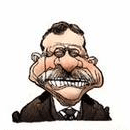
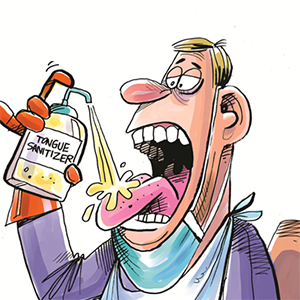

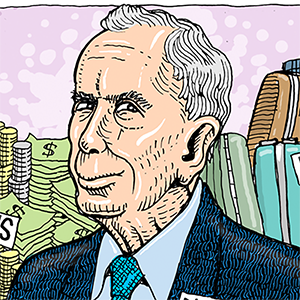
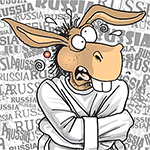
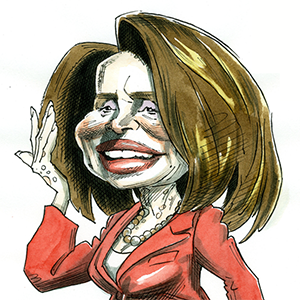
Comments